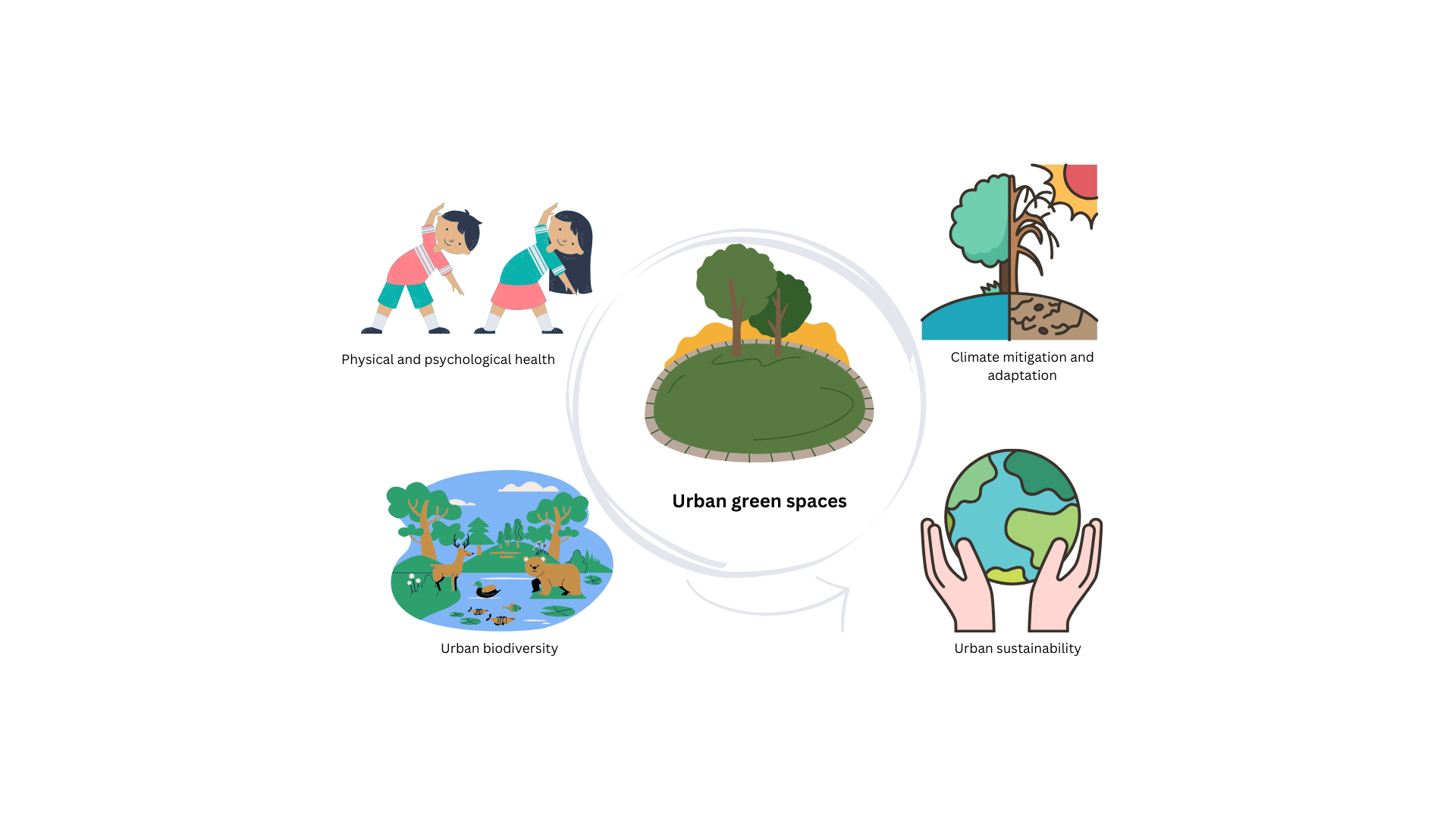
Imagine a city where every neighborhood has lush green spaces that not only beautify the area but also improve the quality of life for its residents. How can we work together to make this vision a reality? Jaewon Son, a participant in the 2024 IIASA Young Scientists Summer Program shares insights into this important question.
Urban green spaces are more than just parks and gardens; they are vital nature-based solutions (NBS). But what are NBS? These are strategies that use nature to address diverse challenges and provide environmental, social, and economic benefits by working with nature rather than against it.
Urban green spaces, such as parks, gardens, and green roofs are prime examples of NBS. They help improve air quality, reduce urban heat islands, support biodiversity, provide recreational areas for residents, and mitigate climate change. By integrating more green spaces into urban planning, cities can enhance their resilience to climate change, improve public health, and create more sustainable living environments.
Despite their importance, planning and managing urban green spaces face diverse challenges across different socio-cultural contexts. A recent study I collaborated on with Juliette Martin and JoAnne Linnerooth-Bayer from IIASA investigated these challenges using Korea and Germany as case studies. The data collection, which was conducted prior to Young Scientists Summer Program (YSSP) involved 30 semi-structured interviews with experts from various sectors in both countries. The data was then analyzed during the YSSP at IIASA from June to August 2024.
In Korea, urban green spaces are managed through a centralized system where cities follow national regulations, but develop localized action plans. In contrast, Germany uses a decentralized approach with state and local regulations taking precedence. According to German experts, Germany also aligns more closely with EU-level policies rather than global frameworks.
Experts from both countries emphasized the importance of effective communication for successful urban green space planning. However, engaging a diverse range of stakeholders can be logistically challenging. In Korea, experts saw a need for intermediary park managers to help implement urban green space policies and demonstrate their long-term value. In Germany, the main issue according to the interviewees is the lack of adequate evaluations after urban green space projects are completed.
Korean experts appreciated Germany’s structured approach, while German experts admired Korea’s efficiency and ability to implement changes quickly. These insights highlight the differences between Korea’s centralized system and Germany’s decentralized, state-specific focus.
Key takeaways
Our findings show that both countries face challenges in implementing urban green spaces, but their approaches offer valuable lessons. Korea’s centralized system allows for rapid implementation, but struggles with demonstrating long-term benefits and limited time for further considerations.
As a Korean interviewee from a central administrative agency stated: “Moving forward with this policy requires proving its long-term value. Greater awareness of these issues is needed”.
While allowing for tailored local regulations and alignment with EU policies, Germany’s decentralized system faces difficulties in understanding broader actions and prolonged discussions without tangible outcomes.
An interviewee from a German governmental department noted: “Public engagement is complex due to logistical constraints. Limited budgets make it difficult to fulfill all their wishes for more green spaces and playgrounds.”
It is clear that effective communication and stakeholder engagement are essential in both contexts, although the logistical complexities differ due to governance structures. Securing resources remains a common challenge.
By bridging research, policy, and community engagement, our study contributes to a more holistic approach in harnessing the potential of urban green spaces as NBS. It underscores the need for collaborative efforts to create resilient and sustainable urban environments, drawing on the strengths of both centralized and decentralized systems.
This research will be presented at the German Ecological Society (GfÖ) 53rd Annual Conference taking place at TUM in Freising, Germany, from 9-13 September 2024. I will be the presenting author, with my IIASA mentors and my home university supervisor as coauthors.
Note: This article gives the views of the author, and not the position of the IIASA blog, nor of the International Institute for Applied Systems Analysis.
